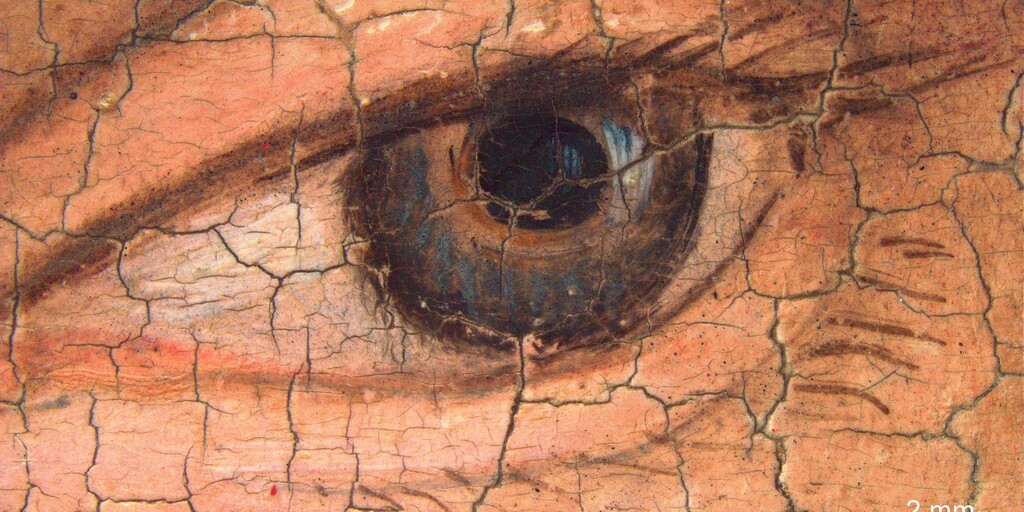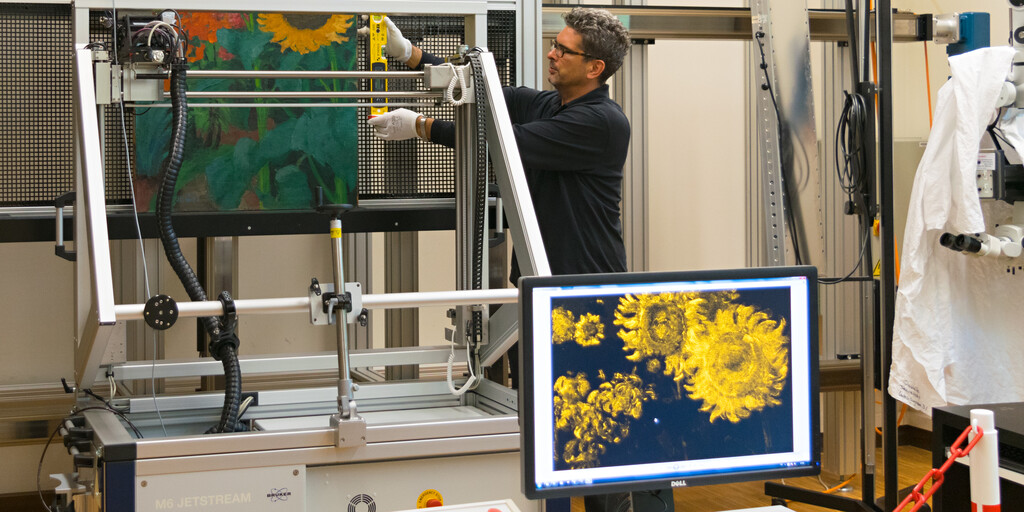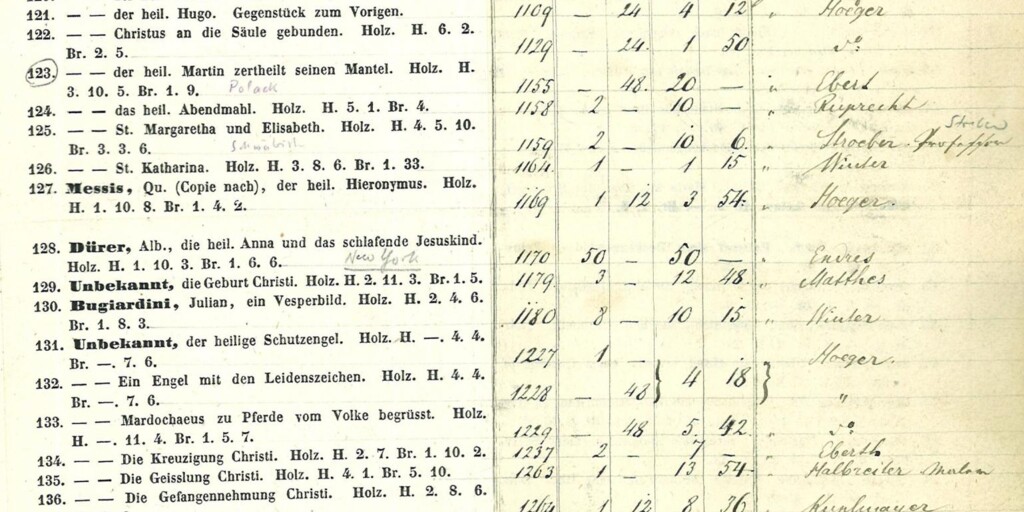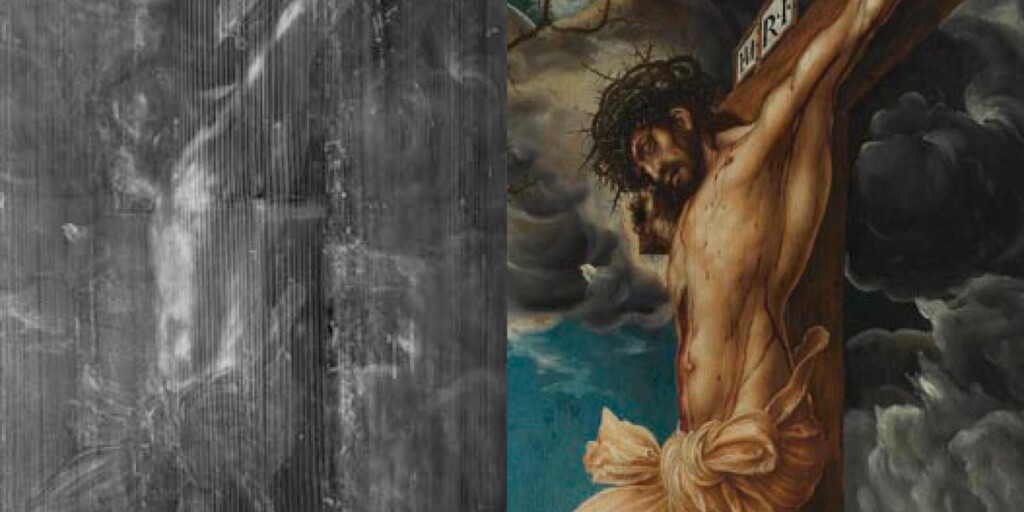Academic and scientific research is a central part of museum work. The Bayerische Staatsgemäldesammlungen and the affiliated Doerner Institut have initiated numerous projects to explore the museums’ holdings at greater depth. The spectrum ranges from provenance research to research on focal points of the museums’ collections and technical examinations of paintings.

Research
Research
Current Research Projects
Here you can find the current research projects of the Bayerische Staatsgemäldesammlungen (Bavarian State Painting Collections):
Completed research projects

Between 2018 and 2021, a collaborative project funded by the Bundesministerium für Bildung und Forschung (Federal Ministry of Education and Research) researched the painting technique and artist materials of the expressionist Emil Nolde. Partners of the multidisciplinary research project were the Doerner Institut of the Bayerische Staatsgemäldesammlungen (coordination), the Foundation Seebüll Ada and Emil Nolde and the Hamburger Kunsthalle in cooperation with the University of Hamburg and the Hochschule der Bildenden Künste Dresden.
Further information on the website of the Doerner Institut.
With over 200 works, the Bayerische Staatsgemäldesammlungen has a world-class collection of multiples. Main examples can be seen continuously in the permanent collection. As part of an 18-month international research project, a website was created in 2014 that provides an overview of the astonishing diversity of materials and forms in this group of works, as well as explaining the spectrum of interpretation.
As part of this research project that lasted several years, 54 paintings in the collection that can be attributed either to Van Dyck himself or to his workshop were examined in collaboration with the Doerner Institut.
Over seventy paintings created in Florence from the 14th to the 16th century, including works by Giotto, Fra Angelico, Leonardo Da Vinci and Botticelli, were studied in detail for the first time by an interdisciplinary research project. The team of art historians, technical analysts, conservators, and scientists investigated the working methods and painting techniques of the Florentine masters. The results were published in an in-depth catalogue with extensive illustrations in 2017. The project was supported by the Deutsche Forschungsgemeinschaft and the Ernst von Siemens Kunststiftung.

In 1852, over 1000 paintings that had been in storage at the Bayerische Staatsgemäldesammlungen in Schleissheim, Augsburg and Nuremberg were sold at a public auction with the permission of the Bavarian royal house. The proceedings were used to fund modern acquisitions for the Wittelsbach portrait gallery. Paintings still occasionally appear on the art market today with inventory labels from this period. Although considered expendable at the time, there were unfortunately several gems among the paintings that were auctioned off, such as Dürer’s Virgin and Child with Saint Anne (today in New York, Metropolitan Museum of Art) and Grünewald’s Stuppach Madonna (today in Freiburg, Augustinermuseum). The project led by Gisela Goldberg, the former curator of Early German painting responsible for the inventories, dealt with the background and circumstances surrounding the auction, which contrary to what its popular title implies was actually held at three places: in Munich, Augsburg and Nuremberg. The text was published in Oberbayerisches Archiv 137 (Munich 2013, pp. 235–275). The original auction catalogues have been digitised and can be viewed on the website of the Zentralinstitut für Kunstgeschichte.

The Bayerische Staatsgemäldesammlungen participated in the international research project on Lucas Cranach the Elder funded by the New York Mellon Foundation together with museums in Berlin, Dresden, London, New York and Vienna.
The Mellon Foundation in New York initiated an international research project on Lucas Cranach the Elder. With one of the largest collections of works by perhaps the most productive painter in the Dürer era, the Bayerische Staatsgemäldesammlungen participated in the research along with museums from Berlin, Dresden, London, New York and Vienna. The aim was to collate the results of studies on works by the master in images and writing and to create a database that could be accessed by scholars and anyone who is interested in the topic. All too often such research remains hidden at the bottom of a drawer for too long before finally being published in a book, so it was an important objective of the project to ensure that the results be made available to the general public in the shortest timeframe possible and free of charge.
Between 2011 and 2013, the Bayerische Staatsgemäldesammlungen, together with the Doerner Institut, researched their extensive holdings of paintings by Jan Brueghel the Elder, as well as those of his father, brother and son, in order to define the artistic development within the family as well as the different handwritings of the individual members.
The Bayerische Staatsgemäldesammlungen owns the most comprehensive collection of paintings by Jan Brueghel the Elder, as well as works by his father Pieter Bruegel, his brother Pieter and his son Jan. A project initiated in 2011 together with the Doerner Institut studied the museum’s entire collection over a period of two years, including works that had been in the storage rooms of the Alte Pinakothek for decades. Digital infrared reflectography and stereomicroscopes were used to analyse the works and gather information on the specific techniques and the processes involved in creating the paintings. The aim of the analyses was to define the different styles of the Brueghel family more precisely and to simultaneously gain insights into its workshop praxis, which will enable us to attribute the works more accurately and to document artistic developments across the generations.
The research studies revealed that the Bayerische Staatsgemäldesammlungen has a total of 49 works by Jan Brueghel the Elder in its care as well as works completed in his workshop or from others in his circle and later followers. The earliest examples were made ca. 1596 directly after his trip to Italy, the latest in the years leading up to his death in 1625. Encompassing numerous landscapes, genre paintings of rustic scenes, allegories and pictures of animals as well as impressive examples of his collaboration with other artists—including the Madonna in Garland of Flowers painted together with Peter Paul Rubens—the Munich collection presents all facets of the artist’s oeuvre. They are complemented by two works from his father Pieter Bruegel the Elder, three by his brother Pieter Brueghel the Younger and five from his son Jan Brueghel the Younger.
The results of the research were published in a catalogue of the collection and presented at the exhibition Brueghel: Paintings by Jan Brueghel the Younger from 22 March to 16 June 2013 at the Alte Pinakothek.
This project was completed in 2011 and today 698 works of art lost during the war from the holdings of the Bayerische Staatsgemäldesammlungen can now be viewed in the Lost Art database.
The majority of cases involve works that were dispersed throughout Bavaria during the Second World War in various public offices and institutions where they had hung, often for decades, as long-term loans from the museum and could therefore not be brought to safety. It is common knowledge that the collections of paintings belonging to the Munich museums and affiliated galleries of the Bayerische Staatsgemäldesammlungen that were stored in the designated shelters survived the war intact.